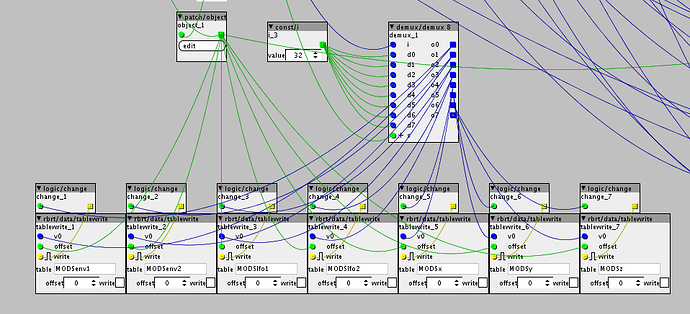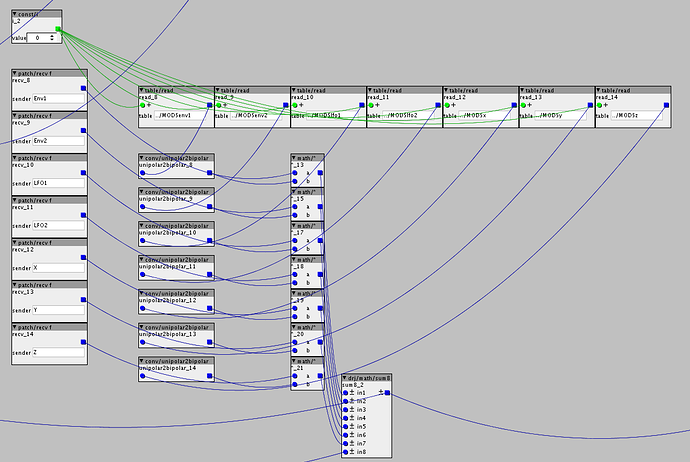Hi again.
I've hit a brick wall with the development of my first Axoloti project. I need your expert help.
I was just adding the finishing touches to my patch: a mod matrix. But have now run out of ram.
The mod matrix is essential to the design of my synth, so it would be great to get this going.
SRAM' overflowed by 38504 bytesCCMSRAM' overflowed by 26400 bytes
that's a lot!
my mod matrix is rather large, if I remove it the patch runs... I just can't map any of my modulation points.
Since it is an MPE synth, a lot of the mod targets are inside the voice subpatch. The way it works is I have "modreceive" supbatch for each modulation target inside my voice subpatch. Each of these modreceive subpatches receives ALL the mod sources, and these get multiplied together in the interface-specified amounts in order to produce one grand total mod amount for each target.
This is obviously very costly, but I'm not sure how else to implement it.
Perhaps it would be more efficient if I could hard code a modreceive object?
Any help, tips, concepts or strategies would be appreciated.

 ) its best to try to keep in mind 'best practice' as you go along like those above, rather than trying to come back and fix things later.
) its best to try to keep in mind 'best practice' as you go along like those above, rather than trying to come back and fix things later.
